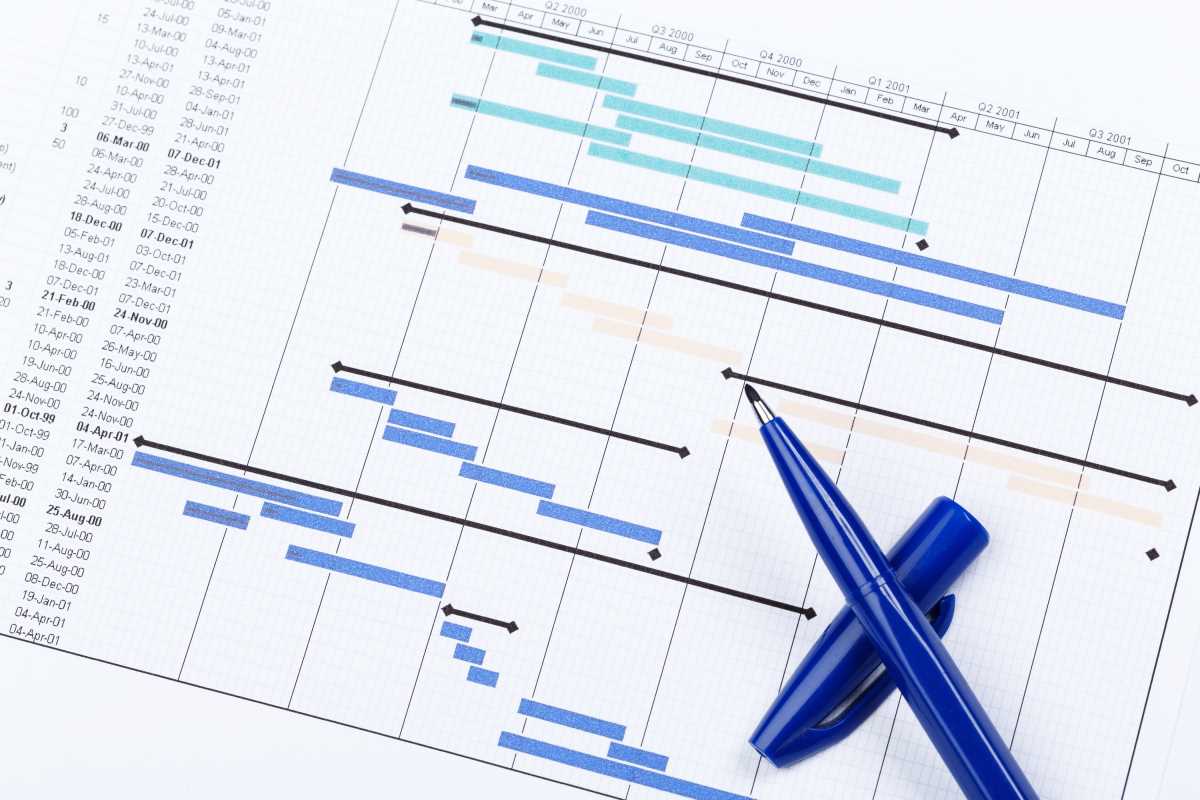Feeling productive can seem like an elusive goal. Some days, you're in the zone, effortlessly checking off tasks and feeling unstoppable. Other days, you're stuck in a cycle of distractions, procrastination, and a to-do list that only seems to get longer. Many people believe that productivity comes from grand gestures, like overhauling their entire schedule or adopting a complex new software system. But the truth is often much simpler. Lasting productivity isn't about revolutionary changes; it's about building small, consistent habits that create momentum and clear the path for focused work. Think of it like building a muscle. You don’t get stronger by lifting an impossibly heavy weight once. You get stronger by lifting a manageable weight consistently over time. In the same way, adopting simple, repeatable habits can transform your workday, reduce stress, and help you accomplish more with less effort. This guide will walk you through ten straightforward habits you can start building today to reclaim your focus and boost your workplace productivity.
1. Plan Your Day the Night Before
Waking up without a plan is like setting sail without a map. You might be busy all day, but you’re likely to drift from one urgent (but not important) task to another, ending the day feeling exhausted but not accomplished. One of the most powerful habits for a productive day is to create your plan the night before.
Taking just 10-15 minutes before you log off for the evening to review your schedule and set your top priorities for the next day allows you to hit the ground running. Your brain can subconsciously process the plan overnight, and you wake up with a clear sense of purpose instead of feeling overwhelmed by a flood of emails and requests.
How to Implement It:
- Identify Your "Big 3": Look at your to-do list and identify the three most important tasks that will move your projects forward. These are your non-negotiables for the next day.
- Time-Block Your Priorities: Schedule specific blocks of time on your calendar for these "Big 3" tasks.
- Prepare Your Workspace: Tidy your desk and gather any materials you’ll need for your first task. This small act reduces friction and makes it easier to start your day.
2. Follow the Two-Minute Rule
Procrastination often happens because a task feels too big or intimidating. The "two-minute rule," popularized by author David Allen, is a simple but brilliant way to overcome this inertia. The rule is simple: if a task takes less than two minutes to complete, do it immediately.
This applies to answering a quick email, filing a document, confirming a meeting, or making a phone call. Instead of letting these tiny tasks pile up and create mental clutter, you deal with them right away. This habit not only keeps your to-do list from becoming a monster but also creates a sense of accomplishment and momentum that can carry you into bigger, more complex projects.
How to Implement It:
- Assess on Arrival: When a new task comes across your desk (or inbox), ask yourself: "Can this be done in two minutes?"
- Act Immediately: If the answer is yes, do it then and there. Don’t add it to a list or save it for later.
- Apply It to Starting Big Tasks: For larger projects, you can adapt the rule. Commit to working on the task for just two minutes. Often, just starting is the hardest part, and those two minutes can easily turn into a longer, productive session.
3. Practice Time-Blocking
Multitasking is a myth. When we think we're multitasking, our brain is actually just switching rapidly between tasks, which is inefficient and mentally draining. Time-blocking is the antidote to multitasking. It involves dividing your day into specific blocks of time, with each block dedicated to a single task or a group of related tasks.
This method forces you to be realistic about how much time you have and encourages you to focus deeply on one thing at a time. It also protects your schedule from interruptions, as you can point to your calendar and say, "I'm in a focus block until 11 a.m., but I can help you after that."
How to Implement It:
- Schedule Everything: Block out time not just for work tasks but also for breaks, lunch, and checking emails. This creates a complete picture of your day.
- Be Realistic: Don't schedule every minute back-to-back. Leave some buffer time between blocks to account for unexpected issues or to simply stretch and reset.
- Use a Digital Calendar: Tools like Google Calendar or Outlook make it easy to create and adjust your time blocks. Use different colors for different types of tasks (e.g., blue for deep work, green for meetings, red for personal time).
4. Tackle Your Most Important Task First
The "eat the frog" method, a concept from Brian Tracy, suggests that you should tackle your most challenging and important task (your "frog") first thing in the morning. This is the task you are most likely to procrastinate on, but it's also the one that will likely have the greatest positive impact on your day.
Our willpower and focus are typically at their peak in the morning. By using that prime mental energy on your hardest task, you ensure it gets done. Completing it provides a massive sense of accomplishment and makes the rest of your day feel easier in comparison.
How to Implement It:
- Identify Your "Frog": When you plan your day the night before, determine which task is your most important and challenging.
- Make It Your First Priority: Commit to working on this task before you get sucked into checking emails or attending to minor requests.
- Eliminate Morning Distractions: Turn off notifications on your phone and computer for the first 60-90 minutes of your day to give yourself an uninterrupted window to eat your frog.
5. Batch Similar Tasks Together
Constantly switching between different types of work is a major drain on productivity. Every time you switch, your brain has to reorient itself, which consumes mental energy. Task batching is the practice of grouping similar tasks together and completing them in a single, dedicated block of time.
For example, instead of answering emails as they arrive, you could set aside two 30-minute blocks each day to process your entire inbox. Instead of making one phone call now and another in an hour, you could batch all your calls into one session. This allows your brain to stay in one mode, making you faster and more efficient.
How to Implement It:
- Identify Your Common Tasks: Make a list of the recurring, similar tasks you do, such as answering emails, making calls, writing reports, or updating social media.
- Create "Batches" on Your Calendar: Assign specific time blocks for each batch of tasks (e.g., "Email Batch" from 11:00-11:30 a.m.).
- Stick to the Batch: When you're in a batch block, focus only on that type of task. Resist the urge to check social media during your writing batch.
6. Take Intentional Breaks
The human brain isn't designed to maintain intense focus for hours on end. Pushing through without a break leads to burnout and diminished performance. Taking short, intentional breaks throughout the day is essential for sustaining productivity.
The Pomodoro Technique is a popular method for this. It involves working in focused 25-minute intervals, separated by 5-minute breaks. After four intervals, you take a longer break of 15-30 minutes. These short breaks give your brain a chance to rest and recharge, which can improve your focus and creativity when you return to your work.
How to Implement It:
- Schedule Your Breaks: Just as you schedule your work, schedule your breaks on your calendar to ensure you actually take them.
- Get Away from Your Screen: A true break involves stepping away from your desk. Stretch, walk around, get some fresh air, or chat with a colleague. Mindlessly scrolling through social media is not a restorative break.
- Use a Timer: A timer can help you stay honest about both your focus periods and your break times.
7. Organize Your Digital Workspace
A cluttered digital workspace can be just as distracting as a messy physical one. Spending several minutes searching for a file or an email can break your concentration and waste valuable time. A well-organized digital environment reduces friction and allows you to find what you need quickly.
How to Implement It:
- Create a Logical Folder System: Organize your files into clear, intuitive folders. You could structure them by project, client, or date.
- Tame Your Inbox: Use folders, labels, and filters to automatically organize incoming emails. Strive to achieve "inbox zero" by processing every email—either by replying, archiving, deleting, or moving it to a task list.
- Clean Your Desktop: A desktop cluttered with dozens of random files is a source of visual stress. Keep only the files you are actively working on, and file everything else away at the end of the day.
8. Turn Off Unnecessary Notifications
Notifications are productivity killers. Every buzz, ding, or pop-up is an interruption that pulls you away from your work. Even if you ignore the notification, your brain has already been distracted, and it can take several minutes to regain your previous level of focus.
Be ruthless about turning off all non-essential notifications. You need to be in control of your attention, not at the mercy of your devices.
How to Implement It:
- Disable Notifications on Your Computer: Go into your system settings and turn off notifications for email, social media, and any other non-critical apps.
- Silence Your Phone: Put your phone on silent and place it out of sight when you need to do deep work. The "out of sight, out of mind" principle is very effective.
- Schedule "Check-in" Times: Instead of being constantly available, schedule specific times to check your email and messages.
9. Set Clear Boundaries
In a connected world, it's easy for work to bleed into your personal time. This lack of boundaries can lead to burnout, which is the ultimate enemy of productivity. Setting clear boundaries around your workday is crucial for long-term sustainability.
This means defining your work hours and sticking to them. It also means learning to say "no" to requests that fall outside your priorities or capacity. A well-rested and balanced mind is a productive mind.
How toImplement It:
- Define Your Workday: Set a clear start and end time for your work and communicate it to your colleagues.
- Create a "Shutdown Ritual": At the end of the day, perform a short ritual to signal to your brain that work is over. This could include cleaning your desk, creating your to-do list for the next day, and saying goodbye to your team.
- Practice Saying "No" Gracefully: You can decline a request while still being helpful. For example: "I don't have the capacity to take that on right now, but I can help you with it next week."
10. Reflect and Adjust
Productivity is not a one-time fix; it's a continuous process of improvement. A habit that works well for you one month might become less effective the next. Taking time to reflect on your process is essential for staying productive in the long run.
At the end of each week, take 15 minutes to conduct a brief review. What went well? What challenges did you face? Which habits were helpful, and which ones were a struggle? This reflection allows you to make small adjustments to your system, ensuring it continues to serve you as your work and priorities evolve.
How to Implement It:
- Schedule a Weekly Review: Add a recurring 15-minute appointment to your calendar for Friday afternoon.
- Ask Key Questions: Use a simple template with questions like "What did I accomplish?", "What got in my way?", and "What will I do differently next week?"
- Celebrate Your Wins: Acknowledge your progress, no matter how small. This positive reinforcement will help you stay motivated to stick with your new habits.
 (Image via
(Image via





